Introduction
It’s August 12, 1884, and geologist Joseph Tyrrell — on the hunt for coal seams in Alberta’s Red Deer Valley — discovers something far different: the first dinosaur fossil ever found in the region, later named the Albertosaurus for its geographical lineage.
A hundred years later, the Tyrrell Museum in Drumheller, an homage to the man who spawned a fruitful century of dinosaur fossil exploration in Alberta, is opened in 1985. One of the most-visited paleontology exhibitions in the world, the museum retrofitted its exterior plaza area in 2021-22 — complete with welcoming trees that provide cooling shade and on-site stormwater treatment thanks to the DeepRoot Silva Cells.
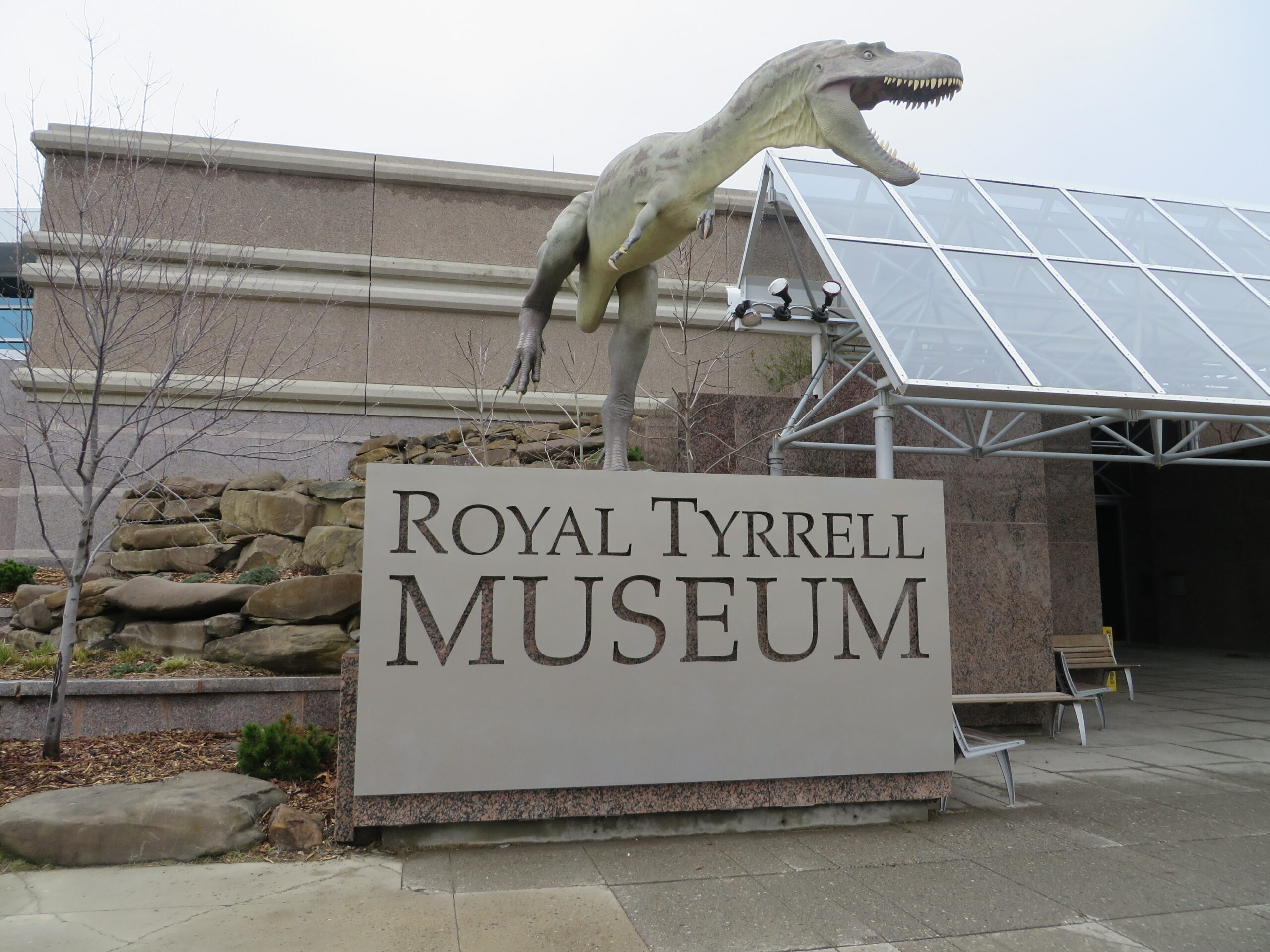
Albertan Dinosaurs
The Albertosaurus (or “Alberta Lizard”) was only the first in a fertile line of provincial discoveries. Red Deer Valley, two hours from Drumheller, is home to Dinosaur Provincial Park: one of the richest fossil areas on Earth. Fifty-eight species of dinosaur have been found at the park with a total of over 500 specimens identified.
The area remains a hotbed of archeological curiosity — in fact, in 2022 a hadrosaur skeleton was found with skin on its ankle: a rare and exciting discovery. International scholars continue to flock to the southern Alberta park for digs and ongoing research. Given the region’s influential history in the field of paleontology, plans for a local museum were put in motion in the early 1980s, finally coming to fruition in 1985.
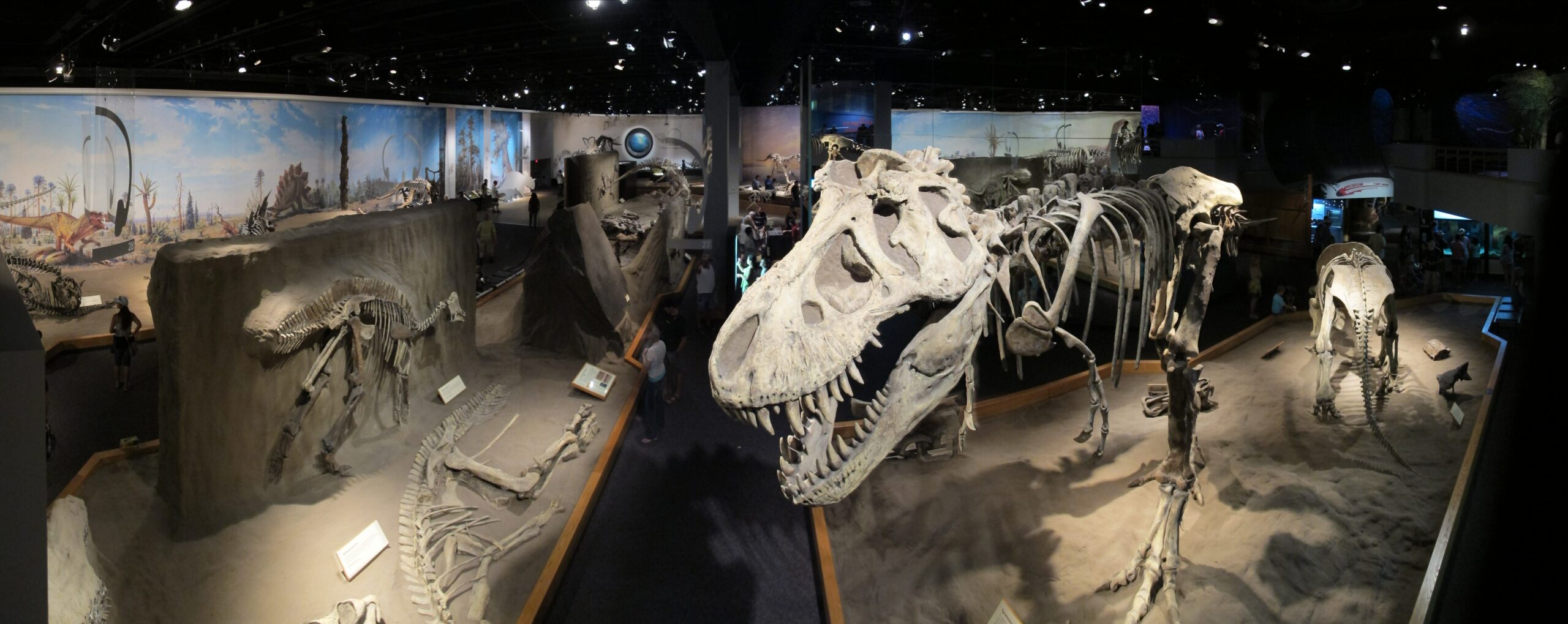
A Museum is Built
The provincial government allocated $30 million for the building of a museum in 1982, hiring a staff of local paleontologists who — in tandem with Albertan officials — settled on Drumheller as its location. The Tyrrell Museum of Palaeontology (the word “Royal” was bestowed on its name five years later by Queen Elizabeth II) was opened to the public on September 25, 1985.
Nearly half a million attendees visit each year, enjoying a rotating display of over 160,000 (mostly Canadian) fossils, with approximately 3,000 specimens added annually. Popular ongoing exhibitions include a recreated pack of Albertosaurus, a sabretooth tiger attacking a mammoth, and a Cretaceous-period garden mimicking ancient life.
The museum team likewise maintains fieldwork in the region, accounting for 85% of the province’s fossil discovery. The collection is so extensive as to hold five Guinness World Records, including the best-preserved Borealopelta and the longest-necked Albertonectes fossil ever recorded. CNN ranks the Royal Tyrrell Museum of Palaeontology as the fifth best dinosaur museum in the world.
Black Beauty
No dinosaur museum would be complete without an exhibit saluting the era’s most infamous predator: in this case, a locally discovered T-Rex named “Black Beauty.”
A high school student on a fishing trip discovered the carnivore’s skull protruding from an Albertan riverbank in 1980, eventually excavated and identified as a remarkably intact tyrannosaurus rex — it is, in fact, the fourteenth most completed T-Rex on Earth. Its name comes from the dark sheen of its bones, owed to minerals found in the adjacent rocks.
It has been studied and replicated around the world; Black Beauty is also thought to be the first specific T-Rex with an officially recognized name, a trend that has continued ever since.
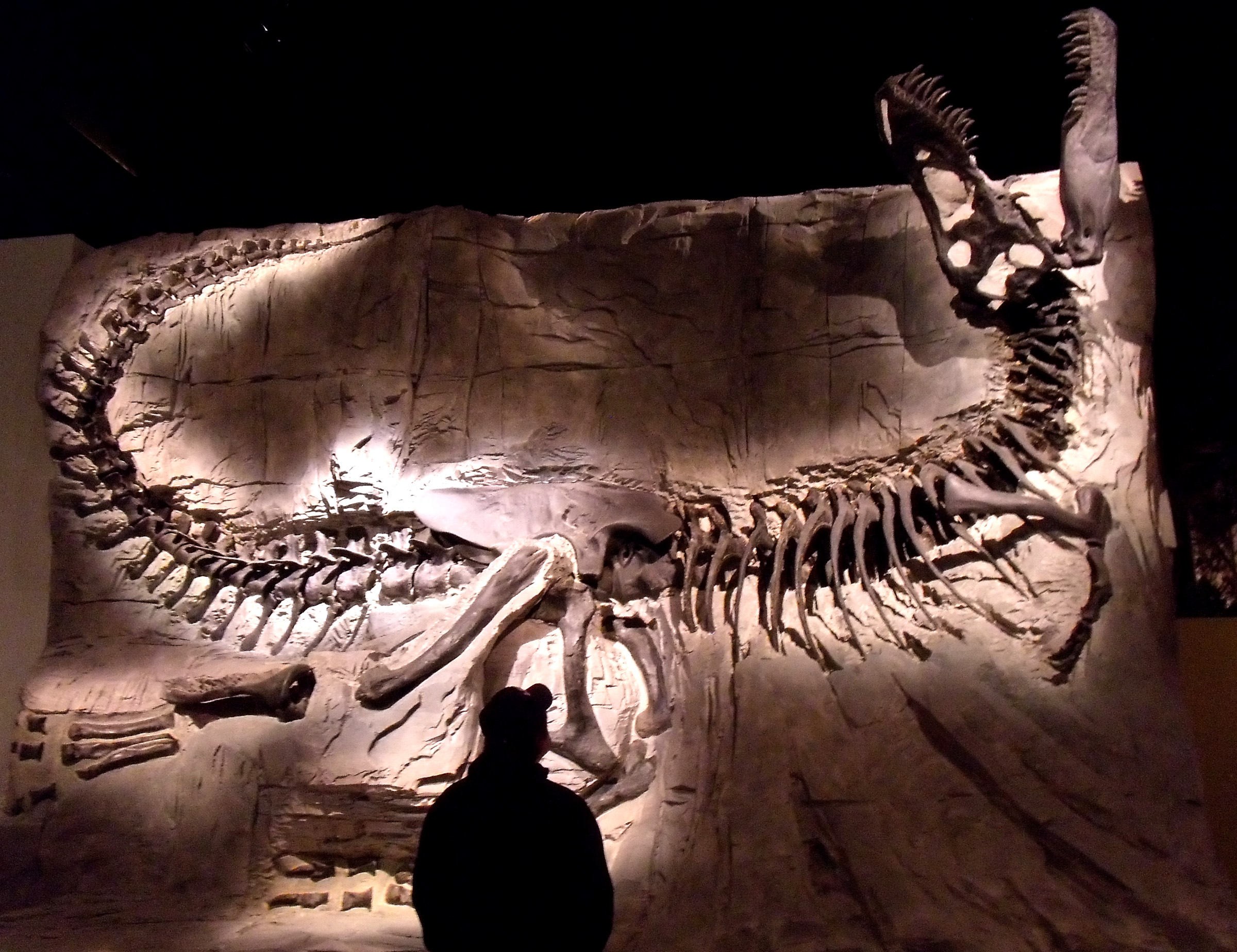
The Plaza
As with any staple community attraction, museum and city officials have continually spurred improvement initiatives — including in the entrance and parking lot area, which began in November 2021.
“We are redeveloping that entire space,” notes Tyler Eddy, Director of Exhibits and Communication. “That area has gone under lots of renovation since 1985. It really is the start of the visitor experience at the Royal Tyrrell Museum.”
The plan was to improve the sightlines, add seating options in the plaza, upgrade the lighting, and incorporate six newly planted trees. In addition to prioritizing a healthy urban forest with a flourishing, shady canopy, project planners also wanted low-impact development (LID) assistance in treating sidewalk and parking area stormwater runoff. The DeepRoot Silva Cell system was tasked with performing both of these functions.
A total of 90 (3x) Silva Cells were installed in March 2022; as the museum did not want to close down the entrance plaza during the busy summer tourist season, the contractor opted to build the project in the winter under a giant “Big Top” heated tent. The flexible modularity of the Silva Cells allowed a stormwater pipe to be installed within its void space, routing plaza rainwater into the system. They simultaneously provide over 90 cubic meters of uncompacted soil to support the six new plaza shade trees, offering the new plantings the best opportunity for successful growth. Effectively, the six new shade trees and the soil volume in the Silva Cells act as a green infrastructure LID source control.
DeepRoot is excited to continue monitoring the performance of the Silva Cells and plaza trees in one of Alberta’s most popular tourist destinations!
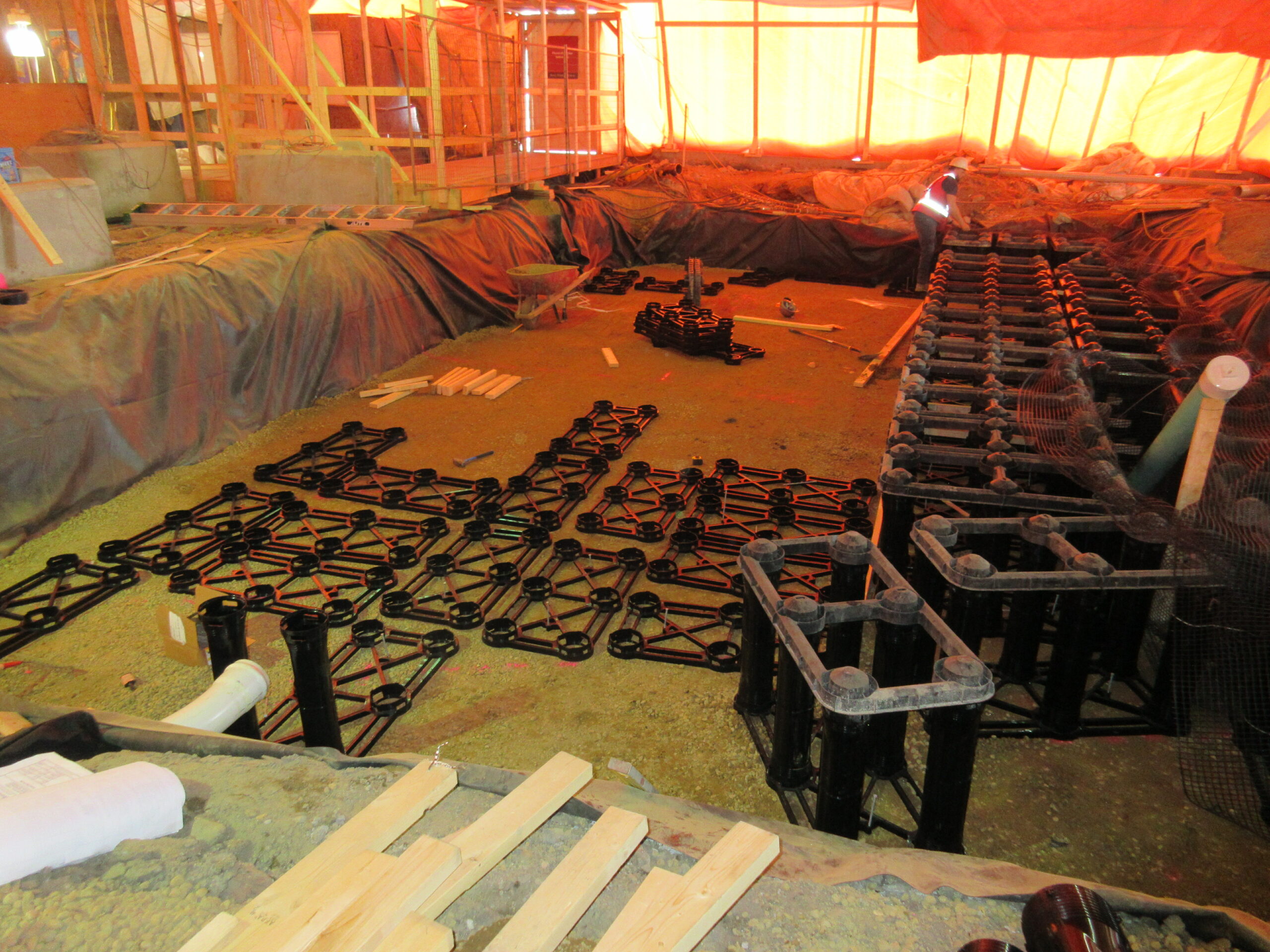
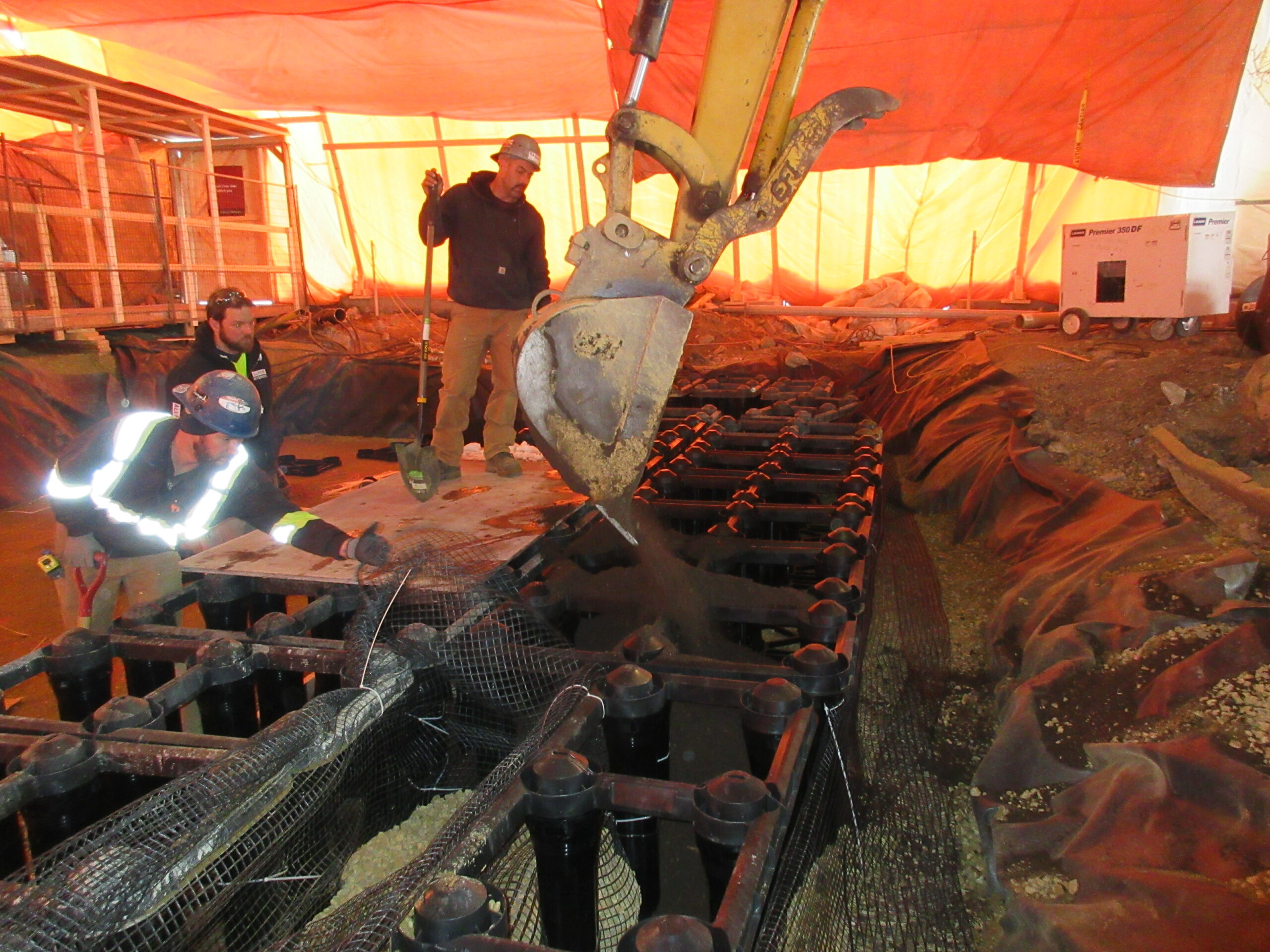






Visited when plaza was barren and HOT! Look forward to future shady space!